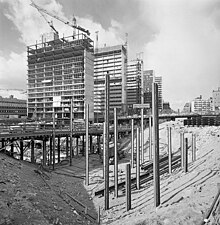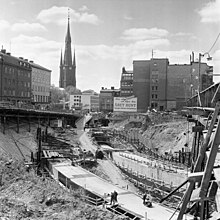Record years


The record years (Swedish: Rekordåren) describes the economy of Sweden during the international post–World War II economic expansion, until the 1973 oil crisis,[1] and largely coinciding with the mandates of prime ministers Tage Erlander and earliest years of Olof Palme. The original use was a satirical left-wing description of the years 1968-70.
Sweden had maintained neutrality during both world wars, and entered the post-war boom with industrial and demographic advantages. Sweden also received aid from the Marshall Plan. Between 1947 and 1974, the Swedish economy grew at an average rate of 12.5% annually. The urban population living in towns over 30,000 people, grew from 40% of the total population in 1931 to 70% by 1971. Sustained by an export boom of automobiles, heavy machinery, electronics, and heavy weapons, the per capita income increased by as much as twenty times. Sweden had successfully moved into the high-income group of countries by 1960.
See also
- History of Sweden (1945–67)
- Million Programme
- Trente Glorieuses, a term used to describe this period in France
- Japanese post-war economic miracle, a term used to describe this period in Japan
References
- ^ Daniel Rydén (8 September 2013). "Krisen som skakade världens bästa land" (in Swedish). Sydsvenskan. Retrieved 5 May 2016.
